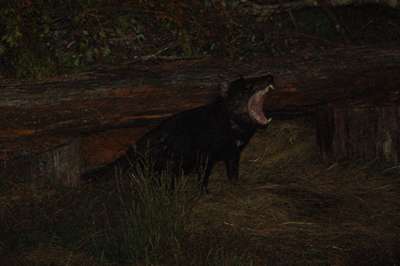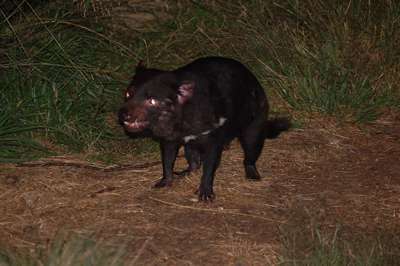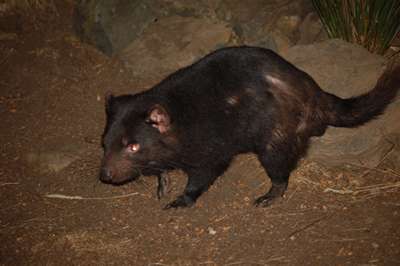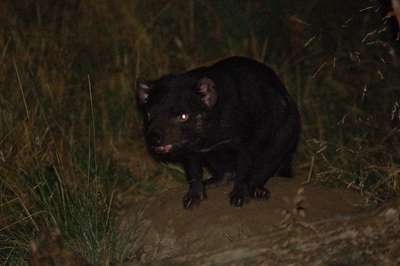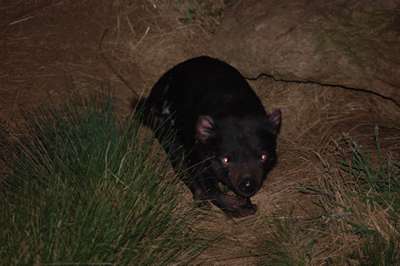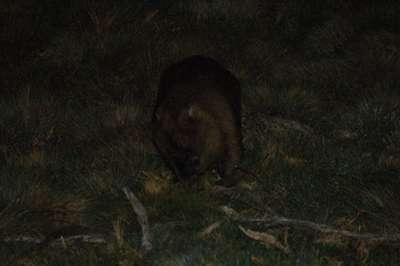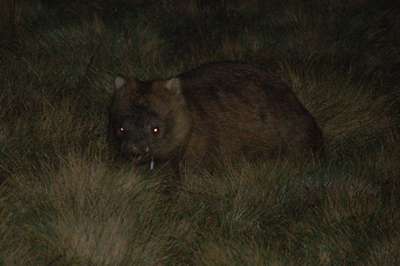Tasmanian Devils

|
Sunday 7th February 2016 We were collected from the campsite around 8.30 p.m. as the
light was beginning to fade, and the coach driver introduced himself and told
us a little about the wildlife on the mountain. By the time we had
collected a few more people from their accommodation, it was beginning to get
dark and we drove very slowly along the road to the Ranger station with all
eyes looking out of the windows for movement. We saw quite a few
wallabies and pademelons, a couple of wombats and a possum’s tail as it
disappeared behind a tree, before we pulled in to Devils@Cradle, a Tasmanian
Devil sanctuary for the evening feeding tour. Tasmanian devils are an endangered species. They are
endemic to Tasmania and are the largest living carnivorous marsupial, the size
of a small dog. The males have large heads and very powerful jaws, able
to bite through bone. It is thought they got the name ‘devil’
because of the ferocious sound they make and the way they look when making it.
They got their name from the ferocious sounds they make
and the way they look.
We could hear the devils crunching their way through this
huge bone.
They didn’t look at all friendly, and I was glad
they were inside a compound and we were outside! The devil population is falling rapidly as a result of Devil
Facial Tumour Disease (DFTD). This disease is characterised by the
development of ulcerated tumours around the jaws and head of the animal.
It is fatal and the animal usually starves to death in 3-5 months. It is
transmissible between individuals, thought to be through aggressive
interactions at feeding sites. The sanctuary runs a breeding programme which
has successfully released healthy devils back into the wild in places where
there is no DFTD. It was very interesting to see these animals and to
hear about their feeding and mating habits. They are marsupials and the
female therefore has a pouch. Although she gives birth to 20-30 live
young after a three-week gestation, most do not survive as she has just four
nipples. She carries up to four babies in her pouch for around 3 months,
and they become independent at 9 months. We saw three compounds with a group of devils in each, and
then went on to see some Eastern and Spotted-tail Quolls for which they also
have a captive breeding programme. Feeding time over, we went back to the coach and resumed our
slow driving along the road looking out for animals. By now it was pitch
dark, and so we had spotlights on the side of the coach to help pick out the
animals. I thought this might frighten them off, but they seemed to just
stand and look straight into the light, as if mesmerised by it. Again we
saw wallabies, pademelons and wombats, but no wild Tassie devils.
A wombat foraging in the grass, unfazed by our presence. An interesting evening, and we were glad we had decided to
go, but just as glad to get home to bed. It had been a long day! |
